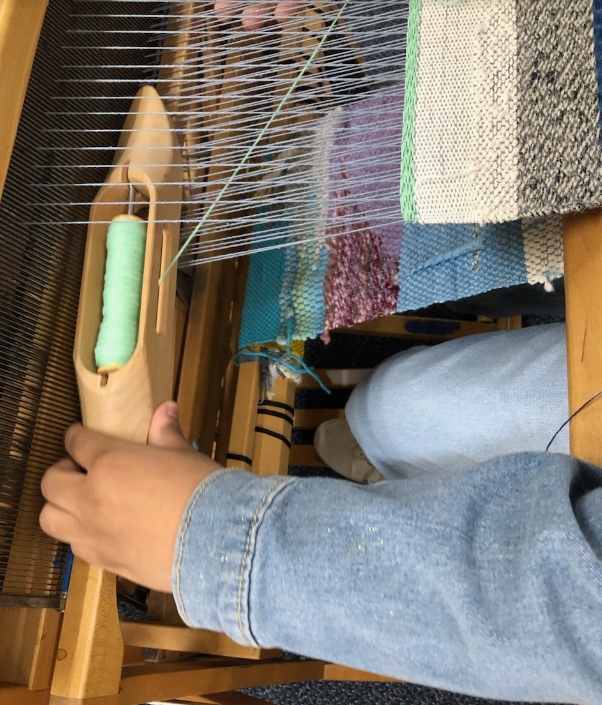For children with combined vision and hearing loss, the natural flow of visual and auditory information from the environment does not occur. The information that is received will likely be incomplete, distorted, unreliable, or missing altogether. It is not simply a vision loss plus a hearing loss; instead, it is a vision loss multiplied by a hearing loss, requiring different teaching strategies and modifications to teaching content.”
-Barbara Miles
As Barbara Miles states, deafblindness is an unreliability of access to visual and auditory information. This includes people whose visual or auditory impairment is neurologically based (vision–Cortical/Cerebral Visual Impairment, auditory–Central Auditory Processing Disorder). The student who is deafblind in the classroom may present as a multimodal learner. This means that some combination of the visual, auditory, and tactile senses may be engaged to learn. *The New England Consortium on Deafblindness
Many people have discovered that in a certain environment they get information best from one modality while in another context, they choose to rely on another sense to gain information. Sometimes all senses may be engaged to varying degrees when gathering information. For the learner with a dual-sensory loss, vision and hearing are unreliable senses. In the classroom, the visual or the auditory sense may be the most distal sense (the sense through which they can get information at the greatest distance from the source) that a person uses to get information about the environment.
Vision may be obscured by glare, field restrictions, distance, or any number of ocular or neurological factors. The ability to hear noise may be present but certain frequencies used in speech may be inaccessible. Neither vision nor hearing is a reliable, passive sense to the person who is deafblind. Instead, the learner needs to actively work to get information. Touch may be the sense the individual can most rely on. However, touch requires very close proximity. The tactile sense works both passively and actively. It can be passive as thermoreceptors in the skin may tell a person that their immediate environment is cold or warm. In the case of learning information from this sense using curiosity, it requires action. Exploration and motion required to read braille or to get a sense of size, shape, and texture about an object mostly requires action.
Using the tactile sense for exploration and to get useful information is a skill that takes practice.
It is important to remember that while visual and auditory senses are passive for those of us with typical vision and hearing–the individual with deafblindness must work to get visual and auditory information. They are also working to get information through their tactile sense.
It is the work required to get information through unreliable senses that I wish to emphasize. Students who are deafblind may spend their school day constantly trying to splice together information from their visual, auditory, and tactile senses to get an understanding of their environment. They try to weave together the information that they have gathered to get a more reliable understanding of what is being taught.

This is a struggle because just as weaving on a loom takes time, weaving together information takes time. The task of weaving while keeping up with the fast pace of teaching and learning in the classroom can be overwhelming. This can be especially difficult when–as they progress through the grades–much of the teaching in schools becomes more reliant on visual and auditory instruction.
Student example
I was fortunate to work with one student who is deafblind for 8 years. She is a braille user with a FM/DM system for receptive communication. She uses speech expressively. Academically, she was on track with her peers in math and reading. In order for her to learn in her public school with her typical peers, she was always “on”. She was always actively trying to listen or see and trying to understand information that, for the rest of her classroom peers, came to them passively. It is important to keep in mind the massive task—gathering information through multiple modes and weaving the information together, or deciding that one (possibly unreliable) mode may be best for a given situation—that students who are deafblind are tasked with every hour of their school day.
Some strategies
Control sensory clutter:
- Noise
- Visual
- Movement
- Reduce spatial clutter: number of materials in the student’s work area
Set the stage for success:
- Confirm that you have the student’s attention before giving directions. Directions may need to be repeated numerous times. If one way of saying them doesn’t work twice, break the directions down or say them in another way.
- It is important to check-in with the student to make sure that they understand what is being asked.
- Provide multi-modal instruction. Remember to provide time for a Preview and Review.
- Make sure to allot time to explore new materials before the instruction begins.
- Provide breaks, as constantly trying to get true information and to learn in a visual and auditory environment can be exhausting.
- Reduce rate of speech. Maurice Belote shared the example of Mr. Rogers’ speech rate in his March 25, 2024 virtual presentation Auditory Processing Disorder and CVI. Please go to minute 1:30.
- Avoid touching student physically. ALWAYS GET CONSENT BEFORE TOUCHING THE STUDENT.
- Understand and follow best practices with the Hearing Assistive Technology that may be available.
- Are Intervener Services Appropriate for Your Student Who Is Deafblind? (nationaldb.org). My student has also been fortunate to have an incredible braille transcriptionist/intervener with her at school. The intervener was able to learn through modules from our area’s deafblind project.
Implementation of effective instruction for a student with a hearing loss requires organized and consistent management.”
–Honore Weiner



